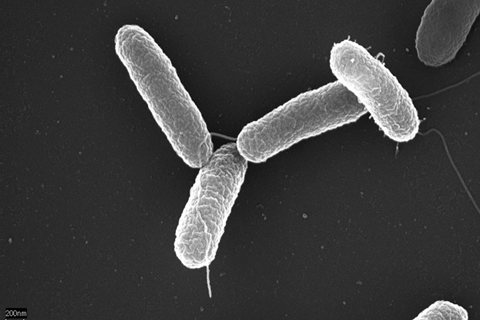In a new study that combines synthetic biology with cancer immunotherapy, researchers from the Yong Loo Lin School of Medicine, National University of Singapore (NUS Medicine) and Central South University in China have developed an engineered strain of gut-homing bacteria that stimulates potent antitumour immune responses against colorectal cancer (CRC).

Antitumour immune responses refer to the actions taken by the body’s immune system to recognise, attack, and destroy cancer cells. It operates like the body’s internal surveillance system, spotting rogue cells (like tumour cells) and activating its defence forces to eliminate them.
READ MORE: DNA analysis shows colorectal cancer has unique microbial fingerprint
Harnessing the immune system to fight cancer offers a powerful and precise approach to disease control. Unlike traditional treatments such as chemotherapy or radiation, which can harm healthy cells, immune responses can selectively target and destroy cancer cells with high specificity.
However, many tumours develop ways to suppress or evade the immune system, creating a hostile microenvironment that works to hide them from immune attack. Enhancing antitumour immune responses helps overcome this suppression and has been linked to improved treatment outcomes and longer survival rates.
Unmet need
There is currently an unmet need for better treatment options for patients with advanced CRC, which is the second leading cause of cancer death worldwide, sitting at over 9% of all cancer deaths*. By engineering bacteria to target both tumours and trigger immune responses locally, the researchers hope to advance a new class of synbiotic therapies.
The research, published in Science Translational Medicine, demonstrates that a genetically modified Salmonella typhimurium strain can colonise tumours and release a therapeutic protein, LIGHT, to induce the formation of mature tertiary lymphoid structures (mTLSs) in laboratory models. These immune ‘hubs’ are associated with improved survival and stronger responses to treatment in CRC.
“This work provides compelling evidence that mTLSs can be therapeutically induced using synthetic biotics,” said Professor Shawn Chen Xiaoyuan, Nasrat Muzayyin Professor in Medicine and Technology from the Department of Diagnostic Radiology, and Director at the Nanomedicine Translational Research Programme (TRP) at NUS Medicine. “Our engineered strain stimulates a key immune signalling pathway, LIGHT-HVEM, to activate group 3 innate lymphoid cells and kickstart T cell–mediated antitumour responses.”
Bacterial therapy
The bacterial therapy not only suppressed tumour growth and improved survival in the laboratory models, but also restored healthy gut microbiota and showed excellent biocompatibility. Importantly, the treatment was well tolerated in vivo, with no off-target accumulation in other organs.
“This approach could pave the way for programmable ‘living medicines’ that reshape the tumour environment from within,” added co-lead author Professor Pengfei Rong, Department of Radiology, The Third Xiangya Hospital, Central South University.
Next steps for the research team include rigorous testing and advancing toward human clinical trials to assess safety and efficacy in patients.
Background
This research was supported by the:
- Singapore Ministry of Health (MOH) through the National Medical Research Council (NMRC) Office, MOH Holdings Pte Ltd under the NMRC Centre Grant (MOH-000989);
- National Research Foundation, Singapore (NRF) under the NMRC Open Fund-Individual Research Grant (MOH-001388, MOH-001500, MOH-001609 and MOH-001740) administered by the Singapore Ministry of Health through the NMRC Office, MOH Holdings Pte Ltd;
- NRF under the Competitive Research Programme (NRF-000352-00);
- National University of Singapore (NUHSRO/2020/133/Startup/08, NUHSRO/2023/008/NUSMed/TCE/LOA), and NUHSRO/2021/034/TRP/09/Nanomedicine, 23-0173-A0001);
- Singapore Ministry of Education (MOE-000387-00 and MOE-MOET32023-004);
- National Natural Science Foundation of China (nos. 82372072 82071986 and 81771827);
- Key Research and Development Program of Hunan Province (2022SK2025);
- Science and Technology Innovation Program of Hunan Province (2021RC4017);
- Furong Scholars Programme of Hunan Province (2022);
- Natural Science Foundation of Hunan province in China (2021JJ20084);
- Wisdom Accumulation and Talent Cultivation Project of the Third Xiangya Hospital of Central South University, and Central South University Frontier Cross-disciplinary Project (2023QYJC021)
*Bray F, Laversanne M, Sung H, et al. Global cancer statistics 2022: GLOBOCAN estimates of incidence and mortality worldwide for 36 cancers in 185 countries. CA Cancer J Clin. 2024;74(3):229‐263. doi:10.3322/caac.21834
Topics
- Asia & Oceania
- Bacteria
- Bioengineering
- Cancer Microbiology
- Central South University
- colorectal cancer
- Gut Microbiome
- Immunology
- Innovation News
- light
- Microbial Genetics
- National University of Singapore
- One Health
- Pengfei Rong
- Probiotics, Prebiotics & Synbiotics
- Salmonella Typhimurium
- Shawn Chen Xiaoyuan
- Synthetic Biology
- Yong Loo Lin School of Medicine







No comments yet